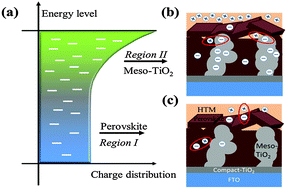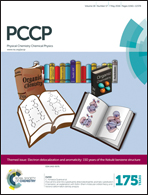Mechanism of biphasic charge recombination and accumulation in TiO2 mesoporous structured perovskite solar cells†
Abstract
Organic–inorganic halide perovskite solar cells are becoming the next big thing in the photovoltaic field owing to their rapidly developing photoelectric conversion performance. Herein, mesoporous structured perovskite devices with various perovskite grain sizes are fabricated by a sequential dropping method, and the charge recombination dynamics is investigated by transient optical-electric measurements. All devices exhibit an overall power conversion efficiency around 15%. More importantly, a biphasic trap-limited charge recombination process is proposed and interpreted by taking into account the specific charge accumulation mechanism in perovskite solar cells. At low Fermi levels, photo-generated electrons predominately populate in the perovskite phase, while at high Fermi levels, most electrons occupy traps in mesoporous TiO2. As a result, the dynamics of charge recombination is, respectively, dominated by the perovskite phase and mesoporous TiO2 in these two cases. The present work would give a new perspective on the charge recombination process in meso-structured perovskite solar cells.


 Please wait while we load your content...
Please wait while we load your content...